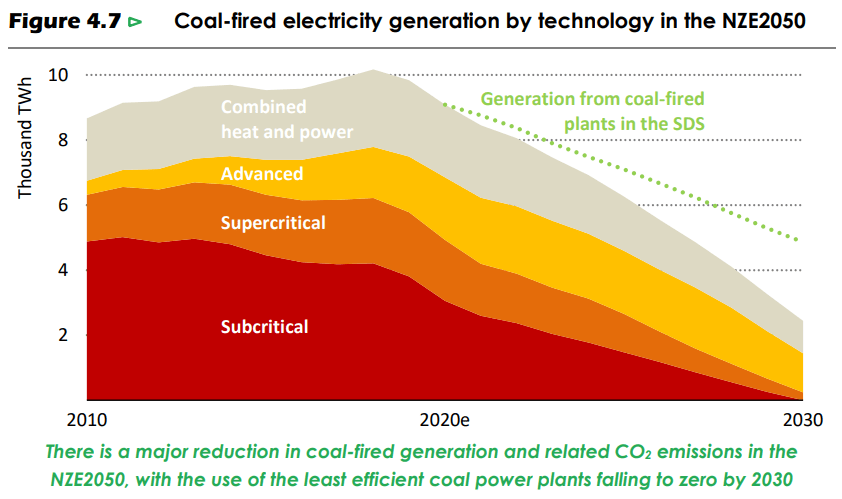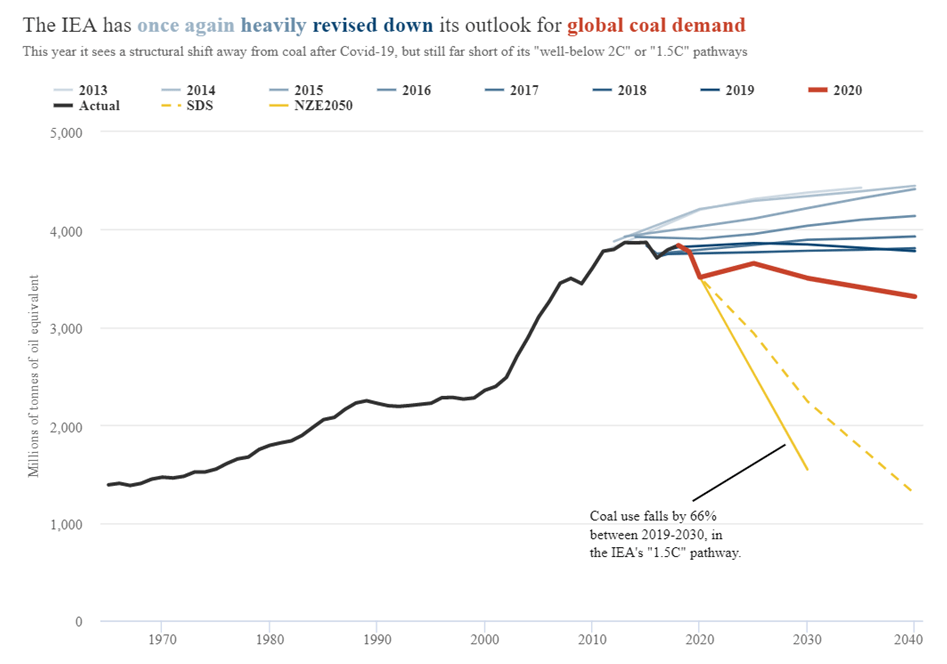The IEA’s 2020 World Energy Outlook was launched today, and one of the special features of this report is their accelerated ambition scenario: “Achieving net-zero emissions by 2050: What would be needed over the next decade?”. This model scenario is a welcome move; their previous Sustainable Development Scenario (SDS) falls short of the emissions cuts needed to achieve the Paris Climate Agreement.
The new scenario, snappily named NZE2050, shows global coal generation must collapse by 75-80% by 2030, compared to 2019 (see the IEA’s graphic below). This puts the fall in coal in line with that outlined in IPCC scenarios to reach 1.5 degrees. In comparison, the SDS scenario shows a fall of only 53% (see the dotted line), so this new scenario highlights even more urgency on phasing out coal power than previously envisaged by the IEA.
The IEA splits the coal generation pathway by technology, and this clearly shows inefficient “sub-critical” coal power plants need to be completely phased out by 2030, in order to put the world on a pathway to net-zero by 2050. No modelling has been this explicit before, but it makes complete sense: the dirtiest plants of the dirtiest fuel must be the first to phase-out.
The IEA data shows how important the collapse in coal by 2030 is. To put us on a 2050 net-zero pathway, CO2 emissions from coal power plants must fall by 8 gigatonnes – the same as all the CO2 from all other fossil fuels combined. We absolutely need to have a laser-sharp focus on phasing out coal.
Is it possible to phase-out sub-critical coal by 2030? Well of course anything is possible. It will be hard work. But China’s recent announcement on a 2060 net-zero date is a step in the right direction, and they have by far the biggest fleet.
The IEA also dramatically changed their STEP scenario, knocking 10% off global coal demand 2025 and 20% off in 2030, compared to last year. This gives considerable relief we are heading in the right direction, but it still leaves an immense gulf between our current trajectory and what we need for the SDS scenario, let alone the Net-Zero pathway.
And wind and solar mostly replace coal. By 2030, renewables share will increase by 33% of global electricity – an incredible transformation. The IEA infers most of that is wind and solar. That means by 2030, most of the fall in coal market share will be replaced with wind and solar.
Read the full report: World Energy Outlook 2020







The dirtiest plants of the dirtiest fuel must be the first to phase-out